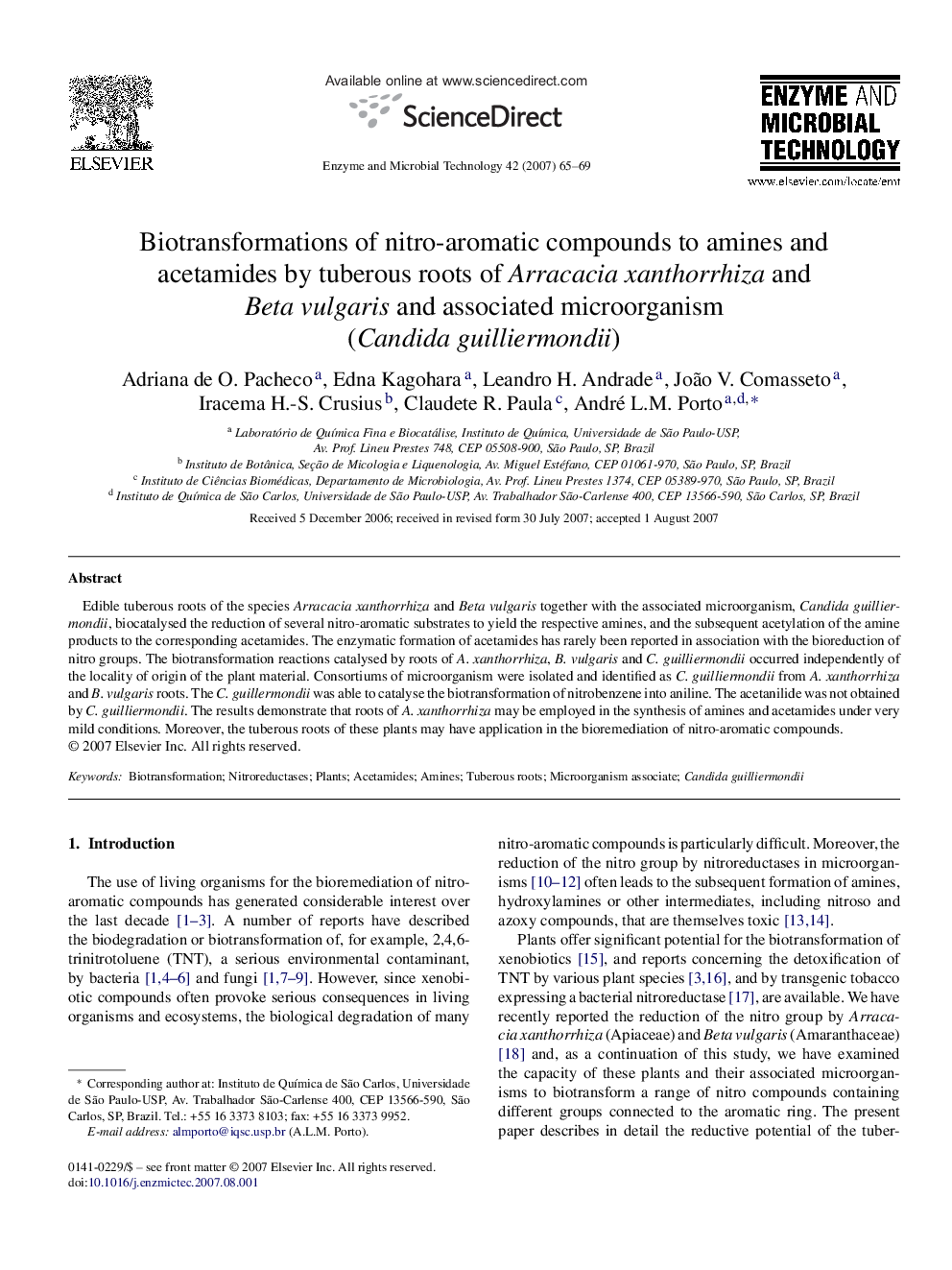| Article ID | Journal | Published Year | Pages | File Type |
|---|---|---|---|---|
| 18604 | Enzyme and Microbial Technology | 2007 | 5 Pages |
Edible tuberous roots of the species Arracacia xanthorrhiza and Beta vulgaris together with the associated microorganism, Candida guilliermondii, biocatalysed the reduction of several nitro-aromatic substrates to yield the respective amines, and the subsequent acetylation of the amine products to the corresponding acetamides. The enzymatic formation of acetamides has rarely been reported in association with the bioreduction of nitro groups. The biotransformation reactions catalysed by roots of A. xanthorrhiza, B. vulgaris and C. guilliermondii occurred independently of the locality of origin of the plant material. Consortiums of microorganism were isolated and identified as C. guilliermondii from A. xanthorrhiza and B. vulgaris roots. The C. guillermondii was able to catalyse the biotransformation of nitrobenzene into aniline. The acetanilide was not obtained by C. guilliermondii. The results demonstrate that roots of A. xanthorrhiza may be employed in the synthesis of amines and acetamides under very mild conditions. Moreover, the tuberous roots of these plants may have application in the bioremediation of nitro-aromatic compounds.
